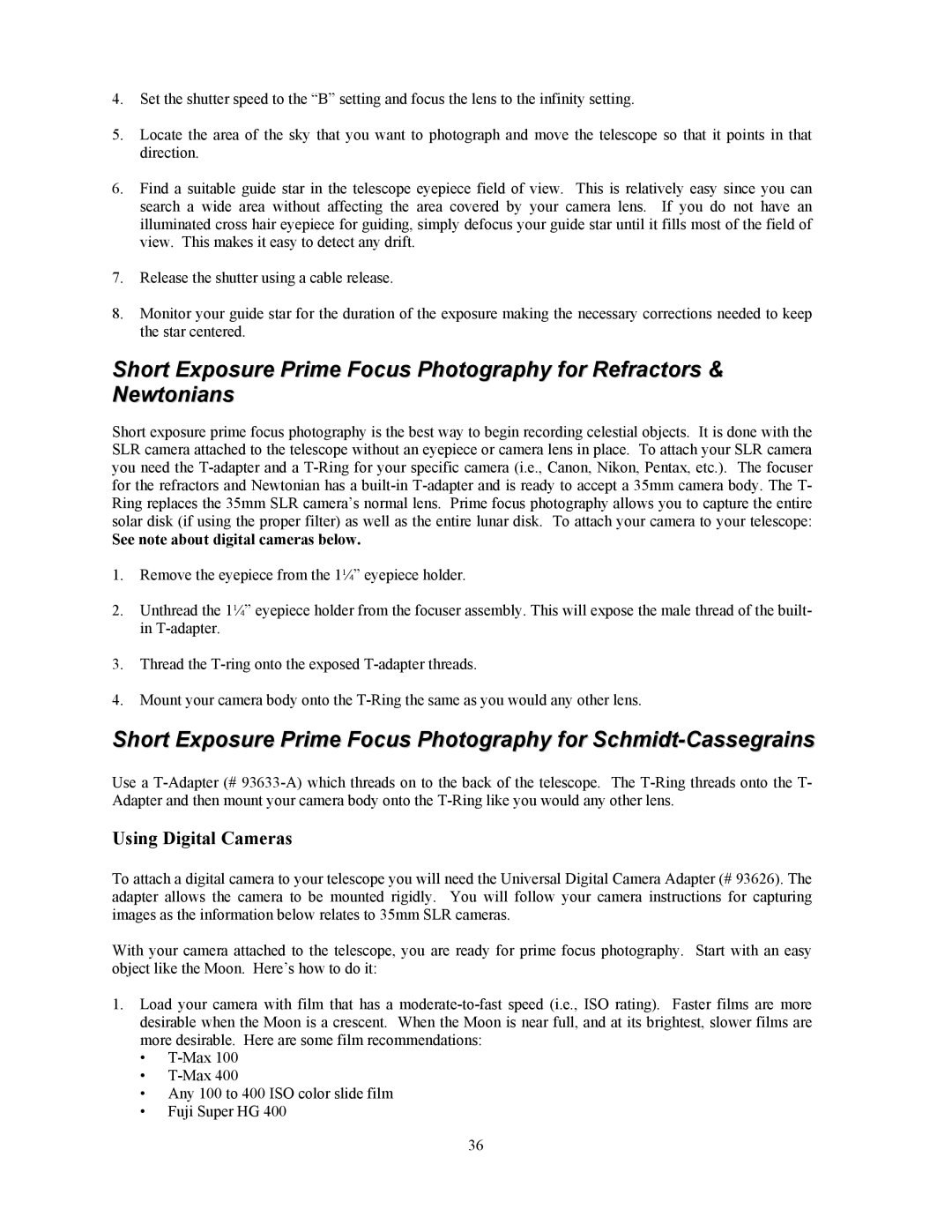4.Set the shutter speed to the “B” setting and focus the lens to the infinity setting.
5.Locate the area of the sky that you want to photograph and move the telescope so that it points in that direction.
6.Find a suitable guide star in the telescope eyepiece field of view. This is relatively easy since you can search a wide area without affecting the area covered by your camera lens. If you do not have an illuminated cross hair eyepiece for guiding, simply defocus your guide star until it fills most of the field of view. This makes it easy to detect any drift.
7.Release the shutter using a cable release.
8.Monitor your guide star for the duration of the exposure making the necessary corrections needed to keep the star centered.
Short Exposure Prime Focus Photography for Refractors & Newtonians
Short exposure prime focus photography is the best way to begin recording celestial objects. It is done with the SLR camera attached to the telescope without an eyepiece or camera lens in place. To attach your SLR camera you need the
See note about digital cameras below.
1.Remove the eyepiece from the 1¼” eyepiece holder.
2.Unthread the 1¼” eyepiece holder from the focuser assembly. This will expose the male thread of the built- in
3.Thread the
4.Mount your camera body onto the
Short Exposure Prime Focus Photography for
Use a
Using Digital Cameras
To attach a digital camera to your telescope you will need the Universal Digital Camera Adapter (# 93626). The adapter allows the camera to be mounted rigidly. You will follow your camera instructions for capturing images as the information below relates to 35mm SLR cameras.
With your camera attached to the telescope, you are ready for prime focus photography. Start with an easy object like the Moon. Here’s how to do it:
1.Load your camera with film that has a
•
•
•Any 100 to 400 ISO color slide film
•Fuji Super HG 400
36
